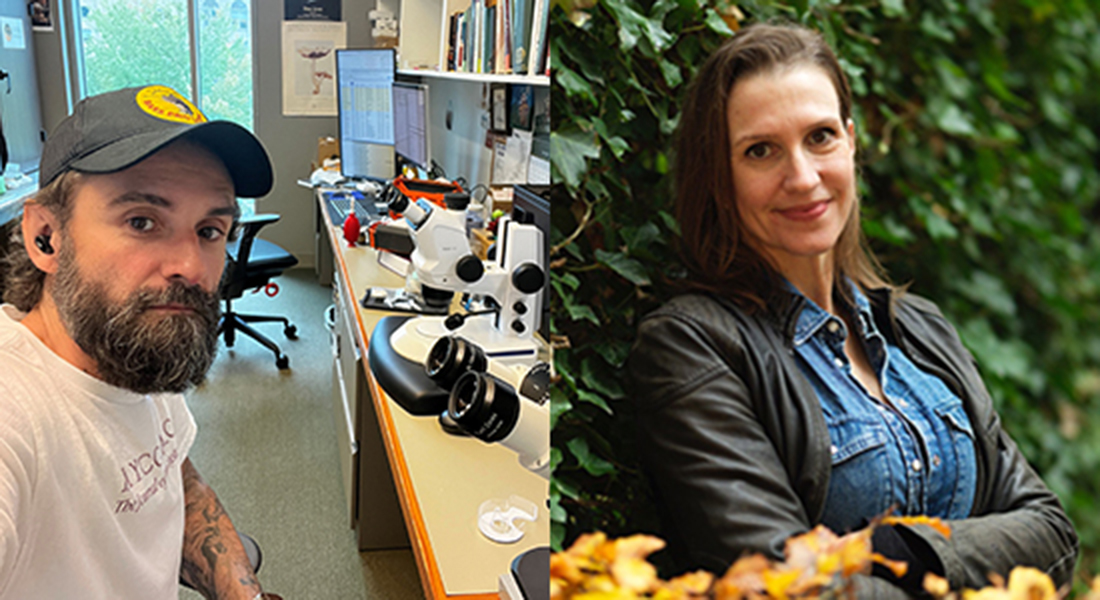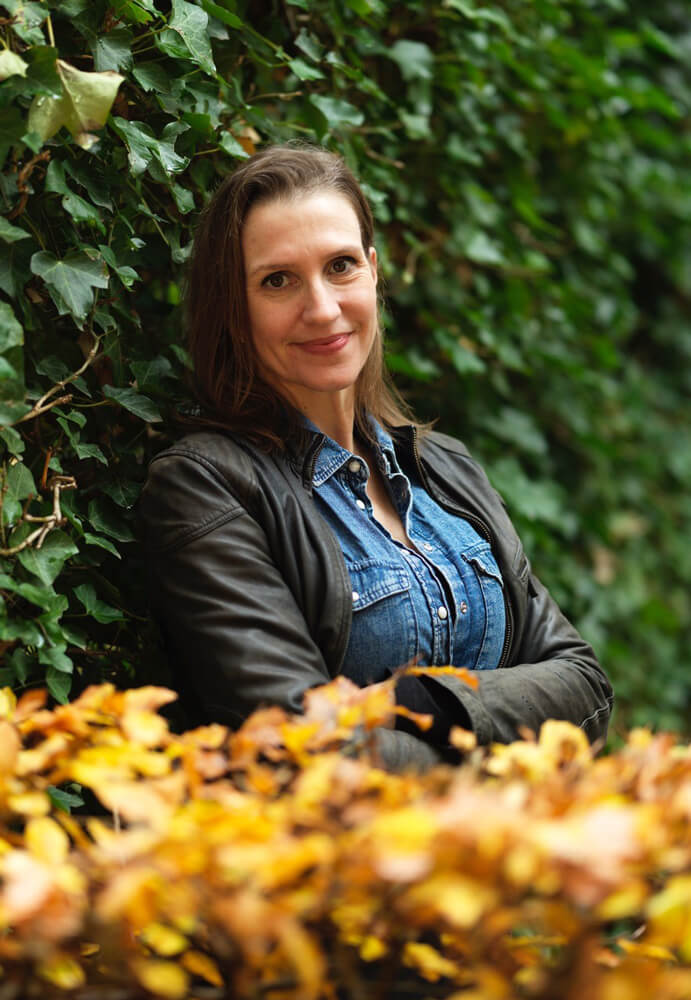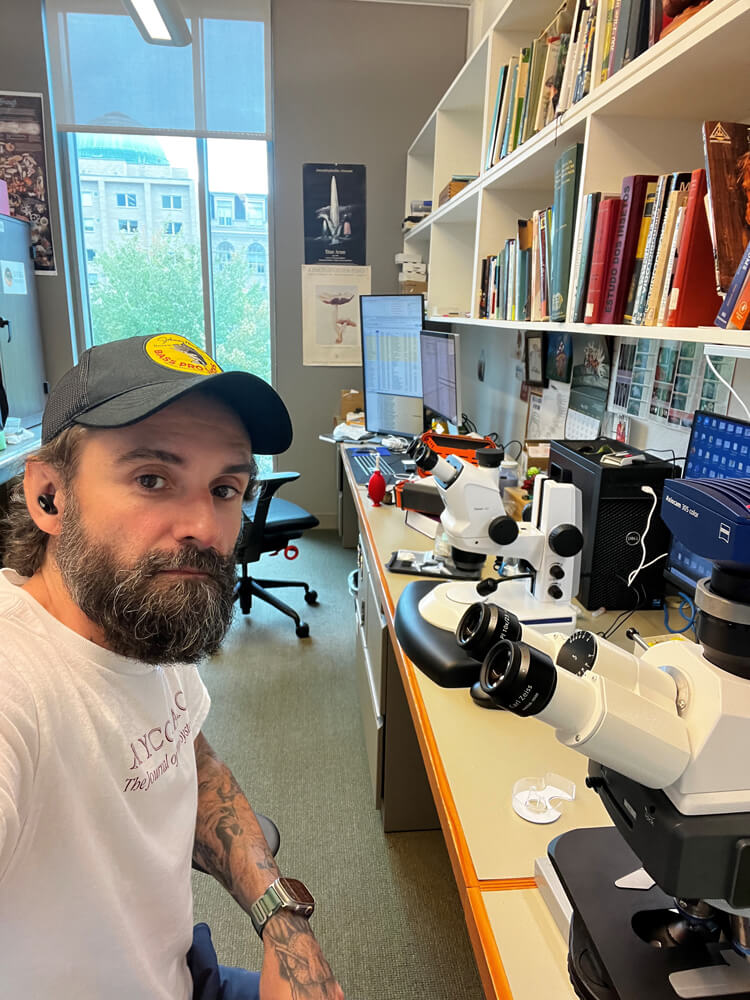Two New Scientists on Tenure Track
Natural History Museum of Denmark has hired two new researchers on tenure track: Natalie Eva Iwanycki Ahlstrand, a botanist, and João Araújo, a mycologist.

Bout tenure track
Tenure track refers to a career path within academic work, particularly in a university setting, where a researcher is hired with the possibility of achieving a permanent position (tenure) at the university after a certain period and meeting specific criteria. Tenure track is designed to attract and retain talented researchers and academics by offering them the opportunity to build their careers within a university environment with the potential for stability and long-term employment.
Natalie Eva Iwanycki Ahlstrand
Natalie is employed in the Section for Science and Society. She is originally from Montreal, Canada. Her research focuses on how the timing of plant flowering, fruit formation, and growth characteristics shift due to climate change.
- While studying botany at McGill University in Montreal, I had the privilege of working part-time at the university's herbarium. I was overwhelmed by the beauty and unique character of each specimen, crucial in helping society understand how best to protect all life on Earth. Learning that there were thousands of institutions worldwide collectively maintaining hundreds of millions of dried and pressed plants left me in awe, says Natalie Eva Iwanycki Ahlstrand.

In her research, she has utilized natural history samples to address a significant public health concern: pollen allergies. Using the Natural History Museum of denmarks's extensive collection of pressed grass samples, she has been able to demonstrate how climate change has affected the flowering times of grasses and the allergic pollen season in Denmark.
- I am working towards predicting which plant species and ecological conditions will survive the climate changes we're facing, while identifying those that might not make it. My approach involves close collaboration with citizens and interest groups contributing to collecting and analyzing data from historical objects, participating in field and garden observations. Hopefully, this work can promote an appreciation for nature conservation and research. This is certainly necessary if we are to make significant progress in combating the biodiversity and climate challenges we face, says Natalie Eva Iwanycki Ahlstrand.
João Araújo
João Araújo is is employed in the Botany Section. He is originally from Brazil, holds a Ph.D. in Biology from Pennsylvania State University. He is a mycologist researching fungi that have developed close relationships with insects, where the fungi act as parasites on their hosts. A classic example includes Cordyceps fungi, including the spectacular zombie ant fungi, infecting and controlling their ant hosts' behavior. (If it sounds familiar, it might be because Cordyceps fungi specifically inspired the plot in the highly popular TV series 'The Last of Us').
"My father was a biology professor, and I grew up using pinned insects as tools for my GI Joe toys. The planes were grasshoppers with their wings spread, and large beetles were my tanks. In my first year of biology, I attended a workshop on fungi taxonomy and fell completely in love with fungi. During my master's, I saw a famous BBC video on YouTube presenting the first time-lapse of a zombie ant fungus. From that day, I decided to research fungi to study these fascinating and charismatic Cordyceps fungi. Here, 17 years later, I'm still working with the most exciting organisms on Earth, fungi," João Araújo shared.

His research focuses on understanding the diversity and evolutionary relationships between arthropods and fungi. One of his goals is to use these fungi to address issues with invasive crop pests and important disease vectors.
João Araújo is convinced that the museum and the University of Copenhagen will be the ideal platform for his research, heavily reliant on collaborations across different fields within biology.
- The collections are an important part of my work. I plan to explore, probably for the first time, the diversity and biology of fungi associated with insects in the Arctic and Danish forests. We might observe specialized adaptations that these fungi developed to survive colder climates and infect local insects that we haven't seen before. I love my job.
- As a researcher, I'll travel the world, documenting and describing biodiversity and making it accessible to the public through beautiful images—a great tool for communicating science to a broader audience. I hope I can contribute to sparking an interest in science among younger generations, says João Araújo.
